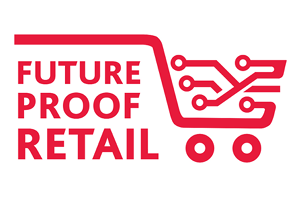
Avoiding Supply Chain Snafus Could be as Easy as R, F, ID
It’s the year 2030 and your star manager calls you a couple of hours before one of your most successful stores is set to open its doors. Your brand, Fresh Fits, is planning to launch a new clothing line — and it’s a big one. Today is the day all stores are releasing Fresh Fits’ much anticipated self-cleaning apparel. Using a combination of hydrophobic materials and nano-UV lights embedded into the fibers, this collection boasts the ability to disinfect itself, only requiring a wash once every 10 wears. Your environmentally conscious consumers are raving, your marketing has generated stellar demand, and your sales forecasts are through the roof.
But as your smart glasses light up with the manager’s call, you know something is wrong. The manager tells you that the final shipment due to be delivered to their store this morning never arrived. The store has shipments from the days prior ready to go, but the last one contained a huge quantity of new items. Current inventory levels simply won’t be enough to meet forecasted demand. Where is the shipment? Did it leave the warehouse? Is it lost?
There’s hope that the shipping carrier will know where the shipment is. Another tap of the smart glasses connects you to your contact who regretfully informs you that the package is in route and left the facility… but hasn’t arrived anywhere else yet. Unfortunately, the carrier won’t know where it’s heading until the pallet is scanned at its new destination.

You panic and realize that if you had invested in the latest RFID technology — affixed to the garments themselves — you could quickly locate the packages’ whereabouts to see if, perhaps, the entire shipment was loaded onto the wrong truck and headed in the wrong direction. If you had invested, you might have been able to avoid this looming disaster.
You remember hearing for years — as far back as 2025, when you first launched Fresh Fits — that RFID technology, which was already around for decades, would soon be more widely adopted and become table stakes for inventory management due to the technology’s ability for real-time inventory tracking and unparalleled visibility. You even watched many of your peers implement it. But alas…your supply chain had been running so smoothly and you were focused on innovative products, not your operations.
Despite its science-fiction characteristics, a catastrophe like this is not hard for today’s retailers to imagine. RFID technology is available for retailers to use today, and while some organizations implement RFID tags, many have yet to fully integrate the technology on a comprehensive level that would provide meaningful, real- time insights across the supply chain and inventory mix. Instead, retailers often focus on customer- facing innovations, and RFID tags are reserved for high-value assets, even though they shouldn’t be.
When RFID technology is implemented thoughtfully throughout operations and across products, retailers can realize significant benefits. Examples of ROI from RFID, according to Chain Lane, include:
- As much as 50% shrinkage reduction
- Improved inventory accuracy of up to 98%
- Top-line sales increase by 2-7%
As more retailers announce plans to deploy RFID technology — including major apparel brands — appetite within the industry may grow at a faster clip. To future-proof and avoid being stuck in a costly dilemma like Fresh Fits, consider the myriad benefits RFID technology can offer.
Rethinking your supply chain beyond RFID tech? Many retailers plan to implement scenario modeling software — check out our 60-second Retail Podcast episode, How Actionable Data Can Make or Break Your Supply Chain, to learn why.
Real Time Inventory Insights Unlock Supply Chain Success
Having data-driven visibility into inventory to ensure products are accurately accounted for is important to succeed in today’s omnichannel landscape. But now there’s an even buzzier phrase than “omnichannel” that the industry is using to describe connected experiences: unified commerce. One way the term is defined is by its ability to combine “centralized data management, inventory management, and unified payment solutions,” according to Retail Brew. A key tenet of unified commerce is improved customer experience (CX) management across different channels or platforms. Inventory accuracy is a big part of CX, making RFID an ideal tool to support the concept of unified commerce.
Equipped with RFID tags and readers, retailers can reduce supply chain friction by more efficiently spotting discrepancies between recorded and actual stock levels, as well as understanding where products are located across stores and distribution centers, and in what quantities.
In practice, RFID tags may sound like bar codes, but RFID tags can store much more data and can be read from a distance. Scanners must read a bar code from up close — and even then, can only receive a limited amount of data. Information stored on an RFID tag can vary, but may include details like serial numbers, product descriptions, product locations, and movement patterns.
Using that information, retailers can effectively track inventory across their network from their manufacturer, during transit, on the shelves, and all the way to purchase. Should an issue arise — such as a shipment not arriving at the appointed time or place — retailers are able to better narrow down the product’s location and work with shippers or suppliers to remedy the situation. .
Many retailers use RFID today primarily for maintaining inventory accuracy, however, the benefits of this technology go beyond that RFID tags are also helpful for loss prevention. Because the tags track the movement of products, retail teams can understand where theft or shrink is occurring based on which items left the store and where they exited, or where in the supply chain inventory seems to get lost. This valuable information could aid retailers in identifying new strategies to reduce or prevent theft.
The data stored on RFID tags can also provide retailers with relevant product information that can inform product quality. For instance, retailers could scan the tag to crosscheck certain materials and products with their sales data to see if products produced by one manufacturer are selling more or resulting in more returns or defects than that of another manufacturer. Should these patterns be identified, they can be traced back to the manufacturing plant where parties can address quality issues that, ultimately, reduce returns and enhance CX.
Beyond these functions, new use cases are still emerging for RFID. For example, it can be combined with computer vision to see how tagged items are moving throughout the store, as illustrated by one technology provider’s recent efforts. Retailers can see which items customers or associates are picking up and where those items land. Was it left in the fitting room? Is it in the back somewhere it shouldn’t be? With stronger inventory tracking and auditing, retailers can make better-informed decisions related to restocking, promotions, and more.
The upside is clear. Yet, while adoption is ticking up, the industry has not seen widespread integration.
Ready to embark on a journey toward top-to-bottom supply chain visibility? Learn how visibility leads to a competitive edge with three hypothetical scenarios and solutions in our insight, The Case for Investing in Supply Chain Visibility.
The RFID Dilemma: Widespread Adoption
RFID technology adoption has been most popular among large retailers with complex supply chains. Their sophisticated networks span multiple countries, various lead times, and include many manufacturers, distribution centers, and stores. These retailers need a live feed into inventory at all times. In addition, 2:21 PMRFID tags have traditionally been seen as cost prohibitive for smaller brands, slowing down adoption.
However, the tides are turning. New research shows that 61% of retailers plan to deploy RFID by 2026, according to Zebra Technology Corporation. As a growing number of mid-sized and smaller retailers are likely to look toward RFID technology, there are several considerations to keep in mind.
Cost is always a factor. Prices for RFID technology ranges but costs for tags are down to as low as four or five cents per tag, compared to 10 or 11 cents in years past, according to Modern Retail. RFID readers are more expensive, potentially going up to $3,000 per unit. Still, with tag prices decreasing and hardware increasingly seen as a one-time investment, adoption should increase.
Aligning and working with manufacturers is another critical consideration. Retailers and manufacturers should agree on standards for RFID frequency, data formats or protocols, and tag placement before implementing the technology. There is not yet an industry standard governing where to apply tags for optimal use and if tags need to be reapplied throughout the product’s journey. For example, some retailers may want to re-tag to change the placement or upgrade to a different or better data format.
Moreover, as retailers collect information from RFID tags, they can compile insights into what’s working in terms of tag placement consistency or data transmissions.
 Finally, it is critical that the data stored on the tag maintains integrity. Data should be written in a way that is interpretable and actionable by all users or parties as the tag’s data records update through its journey. Maintaining data integrity also requires security measures. Cyber-criminals and hackers sometimes target RFID technology via cloning or spoofing to create counterfeit products. They may also change product information stored on a tag, leading to inventory inaccuracy and loss. Retailers should strengthen their data security measures to include robust encryption, access control, and authentication.
Finally, it is critical that the data stored on the tag maintains integrity. Data should be written in a way that is interpretable and actionable by all users or parties as the tag’s data records update through its journey. Maintaining data integrity also requires security measures. Cyber-criminals and hackers sometimes target RFID technology via cloning or spoofing to create counterfeit products. They may also change product information stored on a tag, leading to inventory inaccuracy and loss. Retailers should strengthen their data security measures to include robust encryption, access control, and authentication.
With proper controls in place, RFID technology can help retailers protect their bottom lines as inventory influences profitability. As this technology becomes more affordable and as applications become increasingly effective, RFID tags will no longer be reserved for large retailers. Retailers — especially mid-sized and smaller organizations — ready to future-proof their organizations should act now.
How BDO Helps Retailers Reinvigorate Supply-Chain Tech
To thrive in the retail landscape of the future, retailers may find they need the help of a third-party advisor. Adopting and integrating new supply chain tools can be a herculean task, even when the technology is established or understood.
BDO’s suite of supply chain advisory solutions offers retailers like you an answer for your supply chain questions, from network optimization to demand planning, and AI analytics to systems integration. Our industry professionals work with you and your team to create a resilient supply chain that can integrate RFID and other critical technologies, enabling enhanced inventory management and the customer experience.
Want to make sure you don’t fumble your next big product launch?
BDO’s Retail and Consumer Products professionals are available to offer industry insights into supply chain technology and transformation that can catapult you into the future.